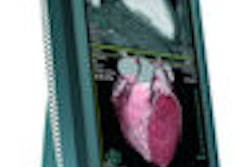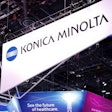Legacy PACS users who still have CD media in their archives may find their disks are not as reliable as their vendors would have them believe, according to research from the University Medical Center Groningen in the Netherlands.
"In current PACS installations 10 to 15 years old, already problems with the CD archives can occur, even when all data are stored on guaranteed media," said Peter van Ooijen, Ph.D. He spoke during a scientific session at last month's Society for Imaging Informatics in Medicine (SIIM) annual meeting in Charlotte, NC.
About 10 years ago, CD-R backup was introduced into the PACS environment instead of tape, offering the advantage of fast availability of near-line storage, van Ooijen said. As an added benefit, CD-R media were guaranteed by their manufacturers to last for many years, provided optimal storage conditions were met.
While the use of CDs in PACS archives has largely faded, some longtime PACS users may still have CD-R media in their long-term archive. To test whether the CD-Rs used in the institution's eight- to 11-year-old archive were still accessible and if the DICOM data could be extracted from them, the researchers examined 600 of their old CD-Rs ranging from 1992 to 1999.
The CDs stored approximately 699 MB per CD with lossless compression and were dedicated for archival purposes by the vendor, van Ooijen said. The CD vendor (Eastman Kodak, Rochester, MN) provided a guaranteed lifetime of more than 100 years for its InfoGuard media.
To test the media, the researchers utilized a Plextor 716A DVD writer (Plextor, Milpitas, CA) and CD Tester, a freeware software tool that tests CD reliability by opening and checking all binary data, displaying any failures, and, if possible, the cause of the failure.
A sample of 25 CDs was diagnosed using CD Tester. Another random sample of 25 CDs was physically analyzed using Plextools Professional LE analysis software to determine low-level C1 and C2 error counts and unrecoverable errors, van Ooijen said.
To provide benchmarking and to determine the correct performance of the CD Tester software, the study team deliberately scratched and exposed old CDs (without the special protective coating used in guaranteed media) to sunlight. The software tool was also evaluated by reading other CD-R media with known problems. All CDs were scanned for DICOM files, and a selection from the disk was uncompressed and transferred to a hard drive location.
From the benchmark tests, the researchers found that minor scratching or damage on nondata parts did not cause any problems. Significant damage hampered readability of the CD, with the CD-ROM drive failing to read the CD or the CD Tester software reporting one or multiple errors. In addition, the researchers found that five-year-old CDs with old white labels were already generating reading errors using CD Tester.
Next, the study team tested a random sample of 25 actual archive CDs using the CD Tester software. Each disk had an average of 3,608 files, with a mean amount of 564.17 MB of data. Of these 25, none reported failures during the technical scanning tests.
The 25 CDs were an average age of 9.5 years old, had a low mean C1 error count of 4807 ± 2137, and had a mean C2 error count of 24.8. No relationship was found between the age of the CD and the number of errors. In addition, all errors (C1 and C2) could be corrected by the DVD drive's error correction algorithm.
Finally, the researchers decided to utilize the DICOM scanning tool on all 600 of the CDs. Of these, nine contained severe reading errors and could not be read. DICOM data were able to be extracted from the remaining CDs without any problems, he said.
Visual examination of the damaged CDs revealed that the majority of the problems were caused by corrosion of the reflective layer, while scratches played only a minor role, van Ooijen said.
"The corrosion mainly occurred at the inner ring of the CD, suggesting ineffective sealing of the reflective layer," he said.
While more expensive, guaranteed media provide better results than standard CD media, several of the guaranteed disks did become unreadable after 10 years, van Ooijen said.
"Using CD marker pens may speed up the deterioration, but a direct relation between the writing location and the offset of the defects was not found," he said. "It was not exactly the same location."
While vendor claims about the lifetime of storage media are very high, even one bad CD can cause serious problems in medical care, van Ooijen said. "Therefore, regular migration and checking of media should be advocated when you use portable media for your backup," he said.
By Erik L. Ridley
AuntMinnie.com staff writer
July 2, 2009
Related Reading
IHE publishes new supplements, June 23, 2009
IHE's XDS-I profile may help with CD import dilemma, April 14, 2009
IHE publishes new supplements, March 24, 2009
IHE readies extensions to PDI profile, March 9, 2009
Testing procedure improves usability of DICOM CDs, January 22, 2007
Copyright © 2009 AuntMinnie.com




















